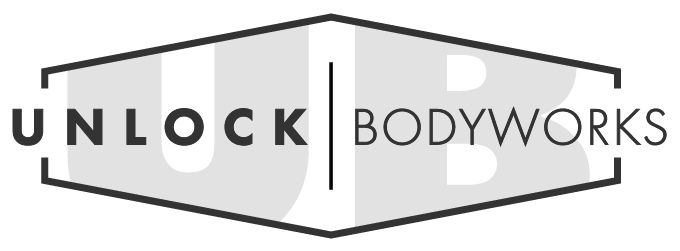Why We Need People
Interview with Mandy Antoniacci
By: Patrick S. Cross, LMT, CPN, CET
Although in the midst of a grueling rehabilitation process after her second neck surgery in two years, Mandy Antoniacci projects a truly impressive vigor for life and an unshakeable drive for inspiring others.
Antoniacci is a tech entrepreneur, sports and health columnist, author, marathoner, and TED Talks speaker. Her book, The Power Of Looking Up, [about breaking away from our distractions and connecting with people] is due to hit the shelf next year.
I had seen Antoniacci’s TED Talks presentation on empowerment in the midst of difficulty, but as she described her experiences to me in more detail I gained a deep appreciation for the fire she has managed to keep brightly burning through the intense mental and physical torrents that could easily have snuffed it out.
PC: Tell me about your process and what stage you’re in now.
MA: It’s been incredible and terrifying all at the same time.
It was right when I accepted the TED presentation that I was going into my first surgery. It all started with my hand going numb. At first I thought it was nothing, but it just kept getting worse. Eventually the numbness and weakness spread all the way up and I found out I was going to need surgery on my cervical spine to fix it.
Rehab from the surgery was rough. It was completely physically draining, and I remember thinking to myself, as an athlete and a person who expects a lot from myself, “How am I going to get up in front of a world audience and present something valuable being this depleted version of myself?”
A year later I found out that the procedure didn’t take. My surgeon explained to me that I happened to be in the 1% of the population that this happens to. “Just bad luck,” he said. So I was going to have to do the whole thing over again. The first surgery hit me hard physically; the second hit me mentally and emotionally. I’m currently going through the rehab for that right now.
Mandy, working on her book while tethered to a bone growth stimulator, post surgery.
PC: How is this round of PT progressing?
MA: I’m doing well over all. My therapists are amazing. Some days I feel great, but other days it’s all I can do to get moving. Some days it takes me three hours just to be able to get out of bed.
PC: Why have you chosen to put such a strong emphasis in your writing and speaking on the roll of connecting with others to reach the best quality of rehab, performance, and life in general?
MA: That’s a big question. The first time I realized the profound importance of human connection was in regards to performance. I was running the L.A. marathon and at mile 19 I was crashing, hard.
I remember feeling like I just couldn’t take another step when I looked up and saw a little boy holding up a sign that read “Free High Fives.” I pulled out my headphones, went over to him, and brushed my hand against his. Instantly I felt a rush of energy and was able to finish the race feeling a strength that I can only attribute to that connection with another human.
That’s when I knew that closing off and going into my own head, just me and my headphones, didn’t make me stronger, it made me weaker. It took the connection with another human, even if only for that brief moment, to bring my strength back.
L.A. Marathon,
finish line.
PC: It’s a common tendency for people to isolate when they are going through hard times. Did you feel that tendency yourself during your rehab process?
MA: Oh yes. I felt that. So much of our strength is symbolic of our self-identity. When I looked in the mirror and saw this depleted, fractured version of myself I didn’t want anyone else to see that, especially not the people closest to me.
PC: How did you break through?
MA: I remember sitting in the waiting room at the hospital. There were all of these other patients, all going in for major procedures, and everyone was scarred. All of a sudden it hit me that no one was speaking with each other. Everyone was just scarred and alone even though there were dozens of people around. So I started sharing my experience with some of them.
I was nervous at first, but the more I shared with them, the more they shared back with me, and something incredible happened. The tone in the room changed as connections were made, and things felt lighter. It was incredibly powerful.
PC: It can be difficult to be the one to reach out and initiate those connections. There’s a lot of vulnerability there. What advice would you give to someone who feels nervous but wants to connect?
MA: Start small. Just say, “Hi.” When we have fear, when we are anxious about connecting with another person, just remember it’s not about you and how you look; it’s about them. It’s a gift you are giving them, and oh by the way… It also helps you.
PC: What, in your view, is the number one benefit of pursuing deeper interactions with the people around us?
MA: We tend to stay in our lane. Our identifications. If we talk to more people and actually care about what they say, we can expand our view, and ultimately ourselves. If we challenge ourselves to interact and find common ground we move past our smaller view and we open ourselves up to possibilities that we would otherwise miss.
PC: I love that. So much of who we are and how we engage in the world is rooted in our viewpoints, and we absolutely need deeper interactions with others if we hope to expand, grow, and evolve those viewpoints.
There’s a common idea that we shouldn’t need others to be happy; that it should all come from within, or it isn’t real happiness. What’s your take on that?
MA: Great question. I’ll have to answer that in three different contexts.
On the level of sports, being insular and just in my head ultimately made me weaker. It took getting out of my head and connecting to give me my strength back.
In the scientific view it’s been studied and documented time and time again. When kids and adults progress in connecting with others, their own self-esteem rises, often dramatically. When people help other people through those connections many other health markers rise as well.
My personal philosophy is this: The difference is about reliance and choosing. If we can’t ever feel happiness without external sources, we are reliant. If we understand that we can choose to interact with external sources to enrich our internal happiness, we are powerful.
It’s about having an open invitation for the outside world to be a part of our internal happiness and fulfillment.
































